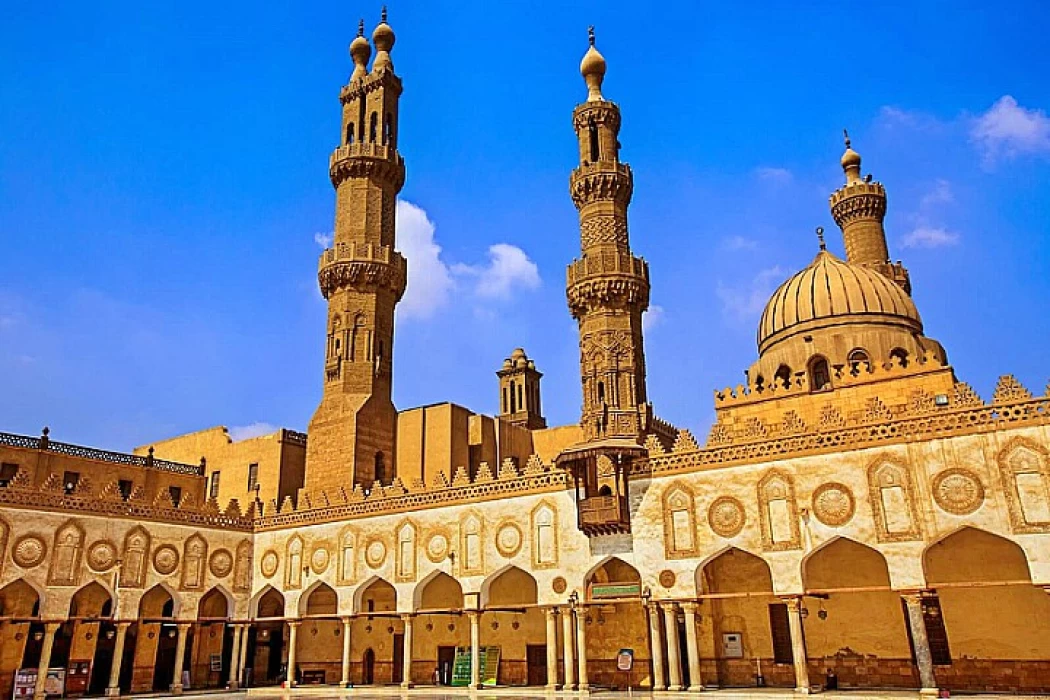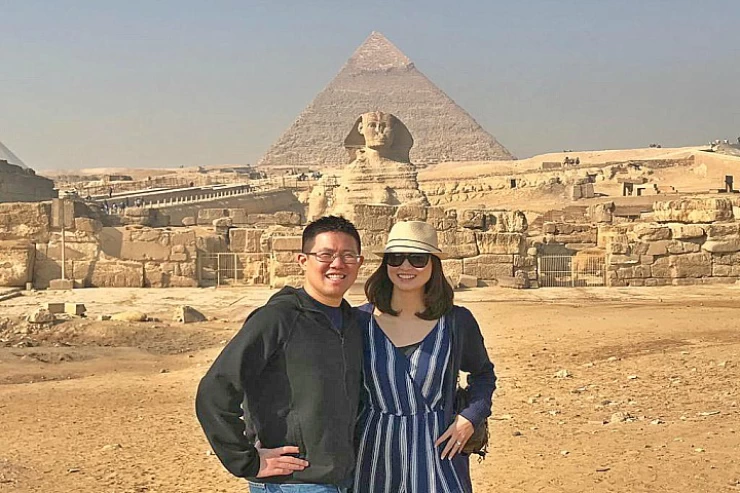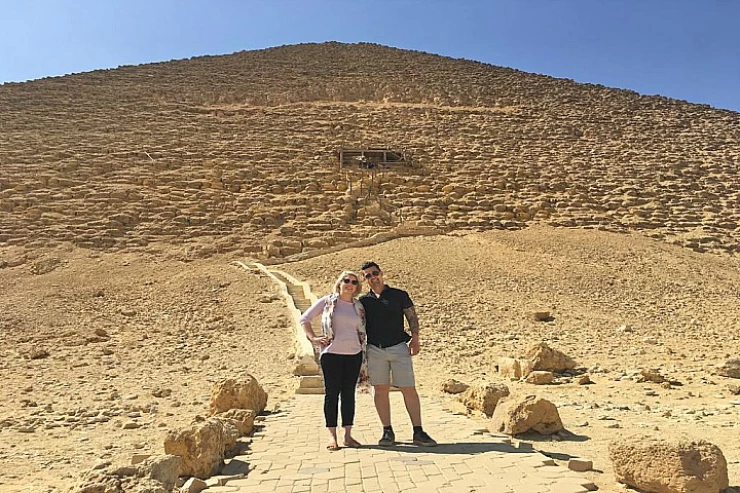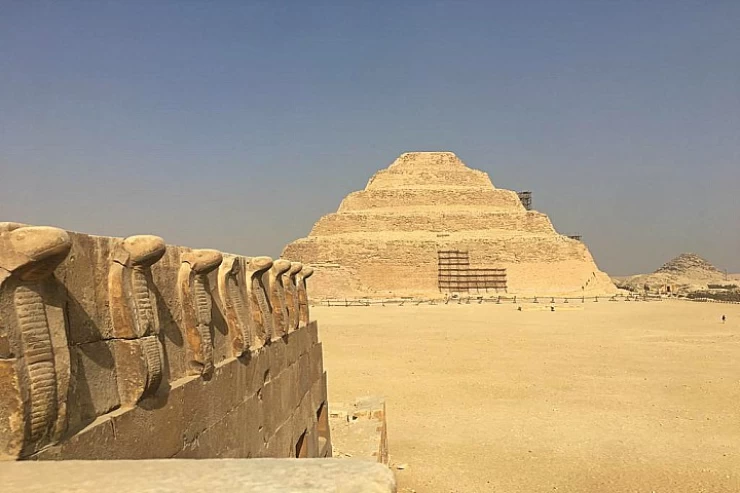
Il Cairo islamico
Il Cairo islamico
Una passeggiata attraverso il Cairo islamico ti trasporta indietro al tempo in cui i musulmani governavano la città. Le moschee, i negozi ed i mercati della questa zona sono tra i più belli della città, ed una passeggiata per le sue strade ti incoraggerà ad immaginare i giorni di gloria della città!
In Egitto non abbiamo solo una grande storia faraonica, ma anche una grande storia islamica di cui andiamo fieri, il monumento islamico al Cairo è il quartiere medievale del Cairo ed una delle città islamiche più antiche del mondo.
Anche se non è la zona più centrale della moderna capitale egiziana, Il Cairo islamico è comunque un ricordo vivente dell'interessante passato della città ed è una delle cose più preferite da fare al Cairo. La maggior parte delle mura fatimidi sono state rotte da tempo, ma ci sono centinaia di reliquie e magnifiche moschee che costeggiano ancora le strade storiche di Al-Qahira. Il Cairo islamico è unico rispetto a molti quartieri storici perché è ancora una parte molto attenta della città e visitata durante tutti i Tour Di Un Gorno Al Caro. Al-Qahira era organizzata con palazzi ed edifici amministrativi quando fu inizialmente costituita, la gente del Cairo si trasferì nella città murata durante un attacco del 12 ° secolo e da allora non se ne andò più. Nonostante la sua architettura fatiscente e le infrastrutture in via di sviluppo, il Cairo islamico rimane una delle aree più sviluppate della città.
La visita del Cairo islamico può essere un compito difficile. È un'area abbastanza vasta, che include l'antica città fatimide e le aree che si estendono a sud fino a La Cittadella di Salah El Din al Cairo ed alla Moschea di Ibn Tulun. Ci sono letteralmente centinaia di siti di diverse dimensioni ed importanza raggruppati lungo questi stretti alleati. inoltre, il fatto che sia ancora un'area commerciale e suburbana trafficata ed il Cairo islamico può rappresentare una vera sfida. Si possono trascorrere diverse settimane semplicemente perdersi in queste antiche strade ; tuttavia, ci sono diverse aree in cui i turisti più occasionali dovrebbero concentrare la loro attenzione per vedere molto di ciò che questa regione storica ha da offrire in un periodo di tempo più breve.
Punti salienti del Cairo islamico:
Il più magnifico museo all'aperto di arte islamica si chiama El Moez Street. era la strada principale della città quando fu costruita nell'XI secolo e qui furono costruiti moschee, scuole, sabil, mausolei e palazzi. La parte settentrionale della strada (tra Bab El-Fotouh e Al-Azhar Street) è stata rinnovata di recente. Questa è una delle parti più grafiche del Cairo. Il complesso Qala'un qui è uno dei più importanti del Cairo.
Puoi facilmente trascorrere la giornata in questa zona, finendo la sera al famoso mercato del Cairo del XIV secolo, Khan Al-Khalili " Bazar di Khan El Khalili ". I lavori di ristrutturazione nella sezione meridionale della strada (dal complesso Ghouriya a Bab Zuweila) sono iniziati nel 2011. Più avanti nell'area di Khan Al-Khalili si trova la Moschea di Al Azhar, una delle moschee belle in Egitto.
Il castello di Salah Al-Din Al-Ayyubi contiene 4 moschee, che sono: " Moschea di Muhammed Ali , moschea di Al-Nasser Mohammed Ibn Kalawoun , Moschea di Sulaiman Pasha Al-Khadim - Sariyat Al-Jabal, Moschea di Ahmad Katkhuda Azban - Moschea di Al-Azab "
La tua visita alle moschee situate all'interno della cittadella di Salah al-Din al-Ayyubi, tra cui la Moschea di Muhammad Ali e la Masjid di al-Nasir Muhammad bin Qalawun, rappresenta uno slancio architettonico della storia islamica egiziana durante l'era di Salah al-Din,
Il nostro team ti aiuterà a viaggiare in Egitto e sperimentare il tempo soleggiato del nostro bel paese durante la Pasqua, grazie alla loro vasta conoscenza del turismo egiziano. Potresti personalizzare il tuo pacchetto selezionando uno dei nostri pacchetti di viaggio in Egitto o sfruttare al massimo il tuo tempo in una breve visita, imparando di più sulla storia egiziana e le sue affascinanti storie e vivendola attraverso tour privati al Cairo. Partecipa ad uno dei nostri tour economici in Egitto attraverso il deserto del Sahara, come i tour di Siwa dal Cairo, per esempio, o preferibilmente i tour nel Deserto Bianco d'Egitto. Scopriresti i nostri tour di un giorno ad Assuan, fareste una gita di un giorno da Assuan ad Abu Simbel, o viaggeresti via terra e vi godresti i nostri tour di un giorno a Luxor per vedere gli incredibili templi di Karnak, il Tempio di Luxor, il Tempio di Hatshepsut, e vedreste le meravigliose tombe splendidamente dipinte nella Valle dei Re, questo è il luogo dove i re e i governanti del nuovo regno riposano in pace ed imparereste i loro riti di mummificazione e sepoltura.
Il Giardino Botanico di Assuan, noto anche come Isola di El Nabatat, è un luogo suggestivo di Assuan dove si può conoscere l'antico Egitto. Si può immaginare come fosse vivere lì all'epoca e vedere tutte le cose incredibili che avevano.
Islamic Cairo is located in the heart of the modern metropolis of Cairo, a place of fascination with its past, culture and beliefs that have been practiced over the years. Also known as Old Cairo or Medieval Cairo, the area has been recognized and declared by UNESCO as an architectural heritage under its protection. It is home to impressive mosques, madrasas and other buildings dating back to the golden age of the Islamic Empire. For tourists, Islamic Cairo is a unique place that transports them to a time when the cries of Musasin could be heard around every corner and people's noses smelled warm spices.
go back to the seventh century when the Arab conquerors first introduced Islam into Egypt. Through the centuries, Cairo rose and became the center of the Islamic Empire under various dynasties: the Fatimids, Ayyubids, Mamluks, as well as the Ottomans. Each of these contributed and left traces of the architectural magnificence and cultural depth of the present surroundings.
Once it bloomed into its glorious days, Islamic Cairo was a thriving metropolis of commerce, schools, and temples. In the 10th century, the Fatimids moved to Egypt and made Cairo their political capital, erecting such memorable edifices as al-Azhar Mosque and the original city enclosure. Later, the Mamluks built their marvelous mosques, tombs, and madrassah structures, which embellished the city further. Even today, Islamic Cairo is still considered to be one of the least altered urban areas containing medieval Islamic architecture throughout the entire world.
When it comes to the variety of places to see in Islamic Cairo, the visitors will surely be loaded with so many sights. Here is a list of some of the landmarks that one should not miss:
1. Citadel of Salah El Din Historical Relevance: Built in the 12th century under the orders of the great Salah El Din (Tamerlane), the Citadel was constructed to protect the city of Cairo from the Crusaders’ threats.Main Characteristics of Construction: The citadel illustrates the example of military architecture of its typical medieval period, characterized by high walls and lookout points. Inside its grounds, tourists can come across the impressive Mosque of Muhammad Ali with its tilted spires and lavish decoration. Overlooking Opportunities: The Citadel is a beautiful and scenic old fortress that has an expansive view over Cairo, enabling you to see even the pyramids clearly at very far distances in good weather, which makes it ideal for taking pictures.
It was Founded in 970 AD, the Al Azhar Mosque is among the oldest universities in the world and a representation of education in Islam.
Art: The mosque is preserved as a fine architectural work of art typical of the Fatimid era. Its complex has exquisitely carved geometric shapes, stucco designs, and a beautiful marble floor. Their artworks in the form of buildings were, however, embellished by other empires, creating a mix of architectural styles under the umbrella of Islamic art.
Spirit: It’s still a religious hub and a cultural center, bringing in scholars, tourists, and other visitors from every corner of the earth. Its atmosphere is comfortable, which allows people a break from the noisy city.
Vibrant Market: Founded in the 14th century, Khan El Khalili is one of Cairo’s most famous souks (markets). A labyrinth of narrow alleys brimming with shops, it’s the perfect place to discover traditional handicrafts, jewelry, spices, and souvenirs.
Historic Tea Houses: While wandering through the bazaar, take a break at one of the historic tea houses, such as El Fishawi’s, which has been serving tea and coffee to patrons for over 200 years. This is a prime spot for people-watching and soaking in the local culture.
Artisan Workshops: Many stalls offer a peek into Cairo’s artisanal heritage, with workshops where craftsmen create intricate gold jewelry, hand-blown glassware, and colorful textiles.
4. The mosque of Sultan Hassan
The Magnificence of Construction: This mosque completed in the 14th century is an epitome of Mamluk designs. Its walls are thick and vertical, with large arches creeping along with a central courtyard enclosing an ablution area.
Center for Educational Purpose: This construction was intended to be a mosque at first and a madrassa (school) attached to it. The purpose was to train pupils in the four Sunni legal schools.
Awesome Features: The stunning mosque has marble inlay, detailed wood carving, and an imposing mihrab, which is a collection of the best works done during the Mamluk’s reign inside.
Cultural Engagements in Islamic CairoIslamic Cairo is not limited to the visit of some ancient archives and churches; it is a cultural experience. So here are some of the activities that could be part of your visit:
1. Attending a Sufi music performance at Ar-Tanura Egyptian Heritage Dance TroupeSpiritual Music: Not only is the venue located at Wekalet El Ghouri an ancient building that serves as a cultural hub, but the performance combines Sufi music and whirling dervishes that are artists performing an age-old dance of spirituality and unison with God.A Vivid Picture: All the spirituality that one associates with Islamic Cairo has easily been stripped away in the loud, festooning music, bright, glittering costumes, and the dervishes spinning around in an entrancing manner.
2. Studying Genre and Context of Islamic Art at the Museum of Islamic Art . An amazing exhibit: The Islamic Arts Museum Malaysia harbors the most extensive collection of Islamic arts ever assembled, consisting of textiles, ceramics, woodworks, and pages and documents from across the Islam dome. Explore: Objects from different Islamic empires and their cultures and achievements in arts within the Islamic world can be found.


















